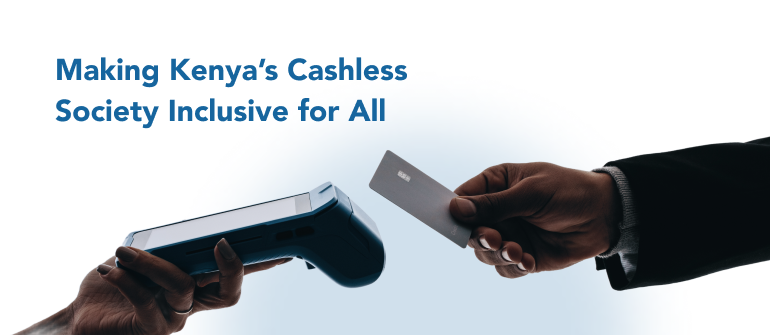
Kenya is making steady progress towards becoming a cashless society. This is driven by factors such as high mobile phone penetration, the rising banked population, increased financial literacy, and government efforts to promote financial inclusion.
A report by Statista on preferred modes of payment at points of sale in Kenya shows that cash is the most preferred mode of payment at 84%, mobile money at 80%, and debit card and credit cards at 22% and 20%, respectively. While cash is still the dominant payment method in Kenya, its usage is declining as mobile money rapidly gains popularity and card payments slowly gain traction.

Despite the rapid advancements and concerted efforts toward creating a cashless society, a transition to an entirely cashless system today would leave a significant portion of the population at a disadvantage. Particularly vulnerable are older people and those living in rural areas, who face unique challenges that could hinder their ability to adapt to a fully digital economy. In this blog, we share tips on how to make a cashless society inclusive for all.
1. Invest in integrated payment solutions.
Fintech companies should focus on developing integrated payment solutions that cater to diverse populations. This includes creating user-friendly interfaces accessible to those who may not be tech-savvy, such as older people. Providing multiple language options and ensuring that these solutions are compatible with various devices, including mobile phones, can help bridge the digital divide. Additionally, financial institutions should consider partnerships with local businesses and community organizations to facilitate the adoption of these solutions in rural areas.
2. Building guardrails.
Collaboration between regulators and industry players is essential for creating an inclusive and secure cashless society. Working together can boost understanding of these innovative business models and help shape future regulatory frameworks. This cooperation can ensure that consumer protection measures are in place, such as safeguarding against fraud and ensuring data privacy. Moreover, establishing clear guidelines can help build trust among users, especially those skeptical about digital transactions.
Read Also: How Pesapal helps your business accept multiple payment methods
3. Leveraging Existing Infrastructure
Leveraging existing infrastructure is crucial to make the transition to a cashless society smoother. This includes using established networks like mobile money platforms, which are widely used in many developing countries. For instance, Pesapal has introduced mobile money payments on its POS machines, an innovation that has been embraced in the market. By building on these familiar systems, financial institutions can encourage more people to adopt digital payment methods. Additionally, integrating digital payment solutions with existing banking services can provide a seamless experience for users, making it easier for them to manage their finances. For example, banks have introduced mobile loans that allow customers to access credit directly from their devices without the need to visit physical branches.
4. Gradual and Inclusive Approach
A gradual and inclusive approach is key to ensuring that no one is left behind in the shift to a cashless society. This involves implementing digital payment systems in phases, allowing time for education and adaptation. Fintech companies should offer training programs and support to help users, particularly the elderly and those in rural areas, become comfortable with digital transactions. Providing clear and simple instructions and ongoing customer support can help build confidence and ease the transition.
5. Maintaining Cash as an Option
While the goal is to create a cashless society, it is important to maintain cash as an option during the transition period. This ensures that those who still need to become comfortable with digital payments still have a reliable means of conducting transactions. Additionally, retaining cash as an option provides a safety net in case of technical issues or outages with digital payment systems. For example, in January 2024, Mpesa experienced an outage that halted over Sh3 billion transactions, costing Safaricom and the broader economy. Businesses that rely on M-Pesa, such as M-Pesa agents, were forced to shut down during the outage, losing revenue.
6. Addressing Unbanked Population
Approximately 21% of Kenyans still need to be included in the formal banking system, leaving them without bank accounts and, consequently, unable to utilize card payment methods. To address this issue, financial institutions must eliminate the barriers preventing individuals from opening bank accounts. By simplifying the process and making banking services more accessible, more people can be included in the formal banking sector, thereby increasing the usage of card payments and fostering greater financial inclusion.
Kenya is a global leader in mobile money and has made significant strides in reducing cash usage, physical currency remains the primary means of payment, especially for low-value transactions. The country is on a steady trajectory towards a cashless future but has not yet reached that point. Continued investment in digital infrastructure and government policies to incentivize digital payments will further reduce Kenya's reliance on cash.
Here are the key advantages and disadvantages of a cashless society:
Advantages
Disadvantages